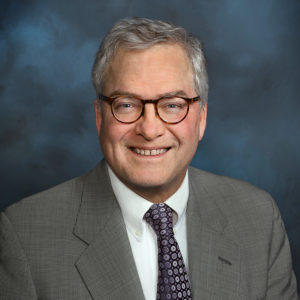by Pat Rooney
“The Federal Reserve is a pretty queer duck,” Wright Patman, member of Congress 1930.
This quote was part of a discussion on the U.S. House floor by Congressman Patman (D-TX) who tried to make the case that the new Federal Reserve building on Constitutional Avenue, completed in 1937, was not actually owned by the Federal Government and therefore subject to local property tax. Instead, he argued that it was owned by the Federal Reserve Banks of the Federal Reserve System (Fed) that were in turn owned by the country’s commercial banks, who hold the stock of the of the Fed as a condition of membership. This dispute continued for several years with the Fed’s lawyers patiently trying to explain that the Fed was an “independent department” of the government.
Congressman Patman never relented and hence the quote above. He was correct. The Federal Reserve is an odd institution, peculiar to say the least. As William Greider points out in his excellent book on the Fed, The Secrets of the Temple, “The Fed enjoys privileges extended to no other agency in Washington. It raises its own revenue, drafts its own budget and submits neither to congressional approval.”
In a nut shell, once the need for a central bank was deemed critical, a secret committee of congressmen, bankers and leading business leaders was formed to draft the necessary legislation to establish the Federal Reserve and finalized it in 1913. First, there were 7 Board of Governors appointed by the U.S. President. So far, so good. But further, to create the necessary “independence,” there is another layer of control by the 12 Federal Reserve Bank Branch Presidents who sit with the Board of Governors on the Federal Open Market Committee (FOMC). This hybrid committee does the heavy lifting, meeting together several times a year and deciding the ups and downs of interest rates. The Federal Reserve Bank Branches have 5 votes and the Board of Governors have 7.
Much of the confusion of the Federal Reserve comes from the aforementioned “stock ownership” of the Fed by commercial banks throughout the country. Mr. Greider notes this confusion and goes on to say that “in fact, the stock shares were a vestigial feature of system membership that had no practical meaning.” There are other details, as well, all created to keep the Fed as “an independent arm of government” and thus as free from politics as possible.
That the Federal Reserve was created at all is a remarkable story. An epic struggle, well detailed in a book by Roger Lowenstein titled America’s Bank. The story incorporates the U.S. President, members of Congress, bankers and businessmen and, not the least of which, a very skeptical public. The government leaders finally agreed we should have a U.S. central bank. England has had one since the 1600’s. The late 1800’s and early 1900’s weren’t good for banks with numerous runs and panics. But many people still didn’t understand the need. And this is still true, to some extent today. Over the years, there has been a consistent, and occasionally noisy, anti-federal reserve group in the country. Mr. Henry Ford, of Ford Motor in the early 20th century, stated the position succinctly “it is well enough that people do not understand our banking and monetary system, for if they did there would be a revolution tomorrow.” Congressman Patman and others have been trying to change the system ever since.
That they have not been successful is because the Federal Reserve works. The central bank has evolved into a very critical backstop for the banking system, improving greatly after the great depression, as we learned the perils of the tight money policies of the Hoover administration. The Fed is now very successful in its role of regulator and liquidity provider for the nation’s banks. Although misunderstood by many, the central bank excelled in recent periods like 2007 and 2020. It has many supporters in Congress and in the country who like it the way that it is. Its structure and complexity, created to assure a degree of independence from politics, will keep it intact and functional, despite all of the noise to the contrary.


There are no comments published yet.